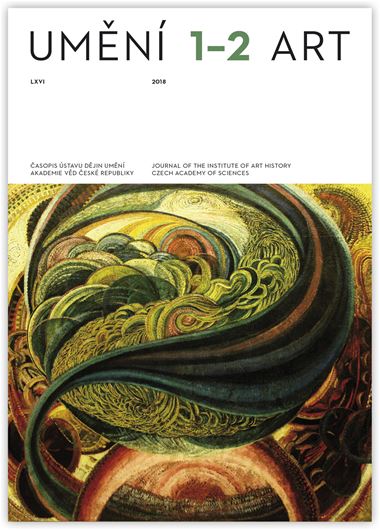Filip Suchomel
Oriental Salon in Liběchov Chateau and the Sources for Its Painted Decoration
Oriental-styled interiors were used as important additions for aristocratic residences in Central Europe beginning in the early 1800s. One unparalleled late realization on this theme is the decoration in the oriental salon on the ground floor in Liběchov, representing an unusual example of contemporary exotic mid-19th- -century Romanticism in the Czech milieu. Oriental architectural elements were not only used at Liběchov. They can also be found on other buildings in the vicinity of Liběchov: in Klácelka Cave or at Slavín in Tupadly, where the large tower has orientalizing details reminiscent of Arabic architecture. The ornamental decoration in the hall on the ground floor of Liběchov chateau also contains elements of Islamic arabesques linked to medallions with exotic flowers, however, the main painted section is typically devoid of Moorish decoration. It consists of three large panels representing Selling Cats in a Chinese Market, Chinese Festival for the Welcoming of Spring and Opium Smokers, complemented by three window panels with the motif of a Musician Playing a Zither for a Group of Ladies in an Exotic Garden, A Samurai with Two Swords and A Beautiful Chinese Lady. The painting of the three largest panneaux at Liběchov can most likely be attributed to Josef Navrátil, who made use of Thomas Allom’s steel engravings from the book China Illustrated. While working on the four-volume series with 128 original engravings, Allom was himself inspired by several older sources. Although he never visited China, his picturesque illustrations became significant iconographic sources for illustrated magazines from the mid-19th century. Two smaller paintings at Liběchov were inspired by illustrations from the book Personen aus Asien by Johann Georg Hecht and Henry Winkler. The source for the last painting is unclear. The concept of the decoration fully corresponds with the atmosphere which formed in the society of enlightened intellectuals around the former proprietor of the estate, Antonín Veith, in this purposefully-built regional center of culture and education in the first half of the 19th century and represents an interesting example of exoticism connected to the period’s interest in traveling and distant countries.
Full-text in the Digital Library of the Czech Academy of Sciences:
https://kramerius.lib.cas.cz/uuid/uuid:5f3c34a4-e60f-4997-877e-97817482c95f
< back

